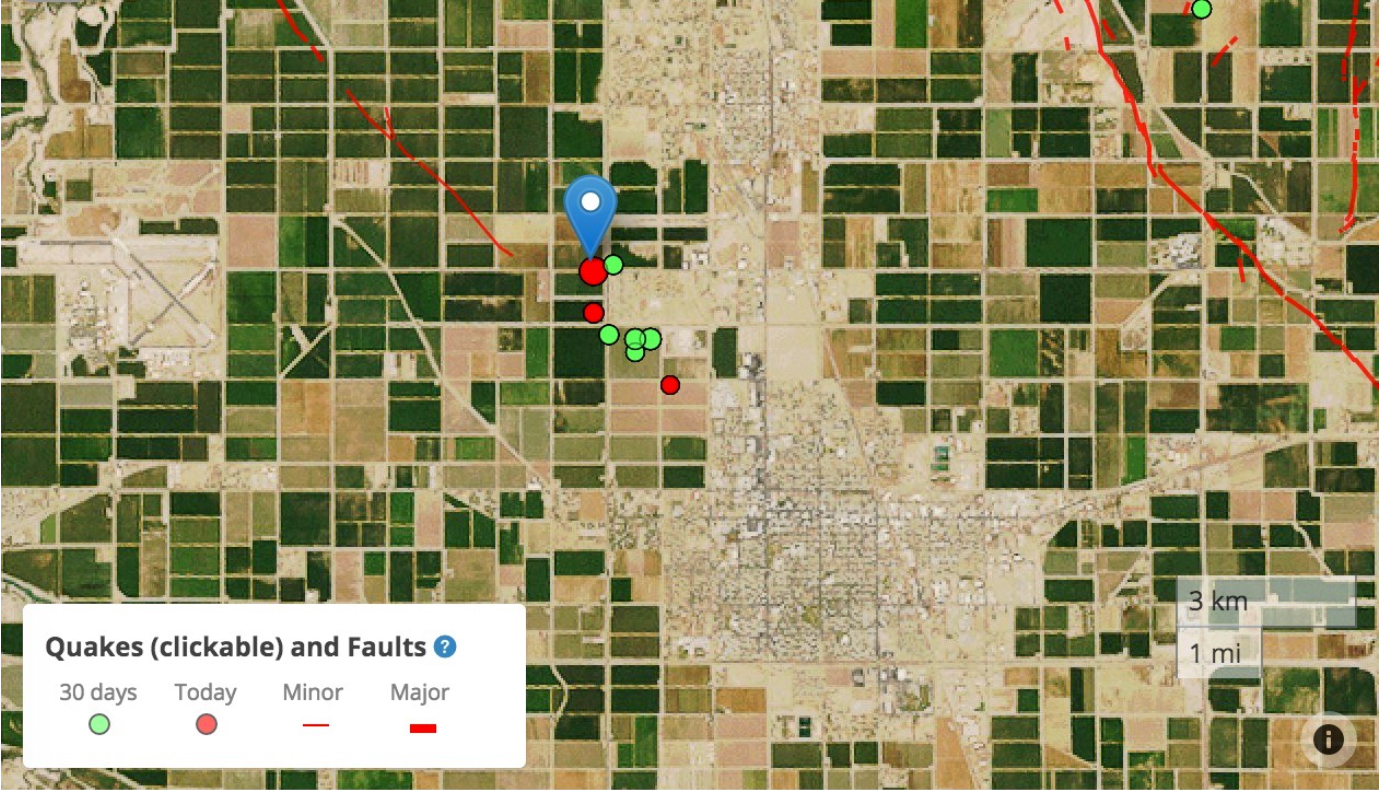22 April 2016 | Quake Insights
A seismic burst, so far topped only by a M=3.4 shock, struck beneath the city of Imperial yesterday. It’s a fascinating location, where the San Andreas fault system converges with the San Jacinto fault system.

The site of the recent swarm is surrounded by the rupture zones of recent large earthquakes, and so has among the highest Temblor seismic hazard ranks in the U.S. Those shocks include the overlapping 1940 M=6.9 and 1979 M=6.4 Imperial Valley earthquakes, the 1987 M=6.6 Superstition Hills earthquake, the 2010 M=7.2 El Mayor-Cucapah quake, which was largely in Baja California but just crossed the border into the US (the Mexican geologists jokingly referred to it as an ‘illegal fault’), and the 26 August 2012 M≤5.4 Brawley Seismic swarm, on a linking cross fault.

Julian Lozos, now at California State University Northridge and formerly a USGS post-Doc, published an article last month in Science Advances arguing that the enigmatic 8 Dec 1812 M~7.5 shock most likely ruptured the San Jacinto fault north of Riverside, but then jumped onto the San Andreas fault. This and another evidence suggests that fault jumps in the San Andreas system are not only possible but likely. This jump took place 150 mi (235 km) northwest of where the two faults converge near Imperial, site of the recent swarm.

Could another large quake re-rupture the Superstition Hills fault, or jump on to the Brawley seismic zone?
The Brawley is an unusual section of the San Andreas without surface expression, but the site of many swarms and fault creep events at depth. Although how these faults connect at depth is unclear, what is indisputable is that major faults and perpendicular ‘cross-faults’ can be activated simultaneously as occurred in 1987 (Hudnut et al., 1989), so there are a myriad of potential linkages that put the cities of Imperial, El Centro, Brawley, Westmoreland, and Mexicali, and the rich surrounding agricultural areas, at risk.
Ross Stein and Volkan Sevilgen, Temblor
Data from Caltech/USGS Southern California Seismic Network, USGS, and California Geological Survey, Southern California Earthquake Center, and:
Julian C. Lozos (2016), A case for historical joint rupture of the San Andreas and San Jacinto faults, Sci. Adv., 2, doi: 10.1126/sciadv.1500621.
Kenneth W. Hudnut, L. Seeber, and J.Pacheco (1989), Cross-fault triggering in the November 1987 Superstition Hills earthquake sequence, southern California, Geophys. Res. Letts., 16, doi: 10.1029/GL016i002p00199
Check your seismic hazard and receive these articles for free
- Earthquake science illuminates landslide behavior - June 13, 2025
- Destruction and Transformation: Lessons learned from the 2015 Gorkha, Nepal, earthquake - April 25, 2025
- Knock, knock, knocking on your door – the Julian earthquake in southern California issues reminder to be prepared - April 24, 2025
